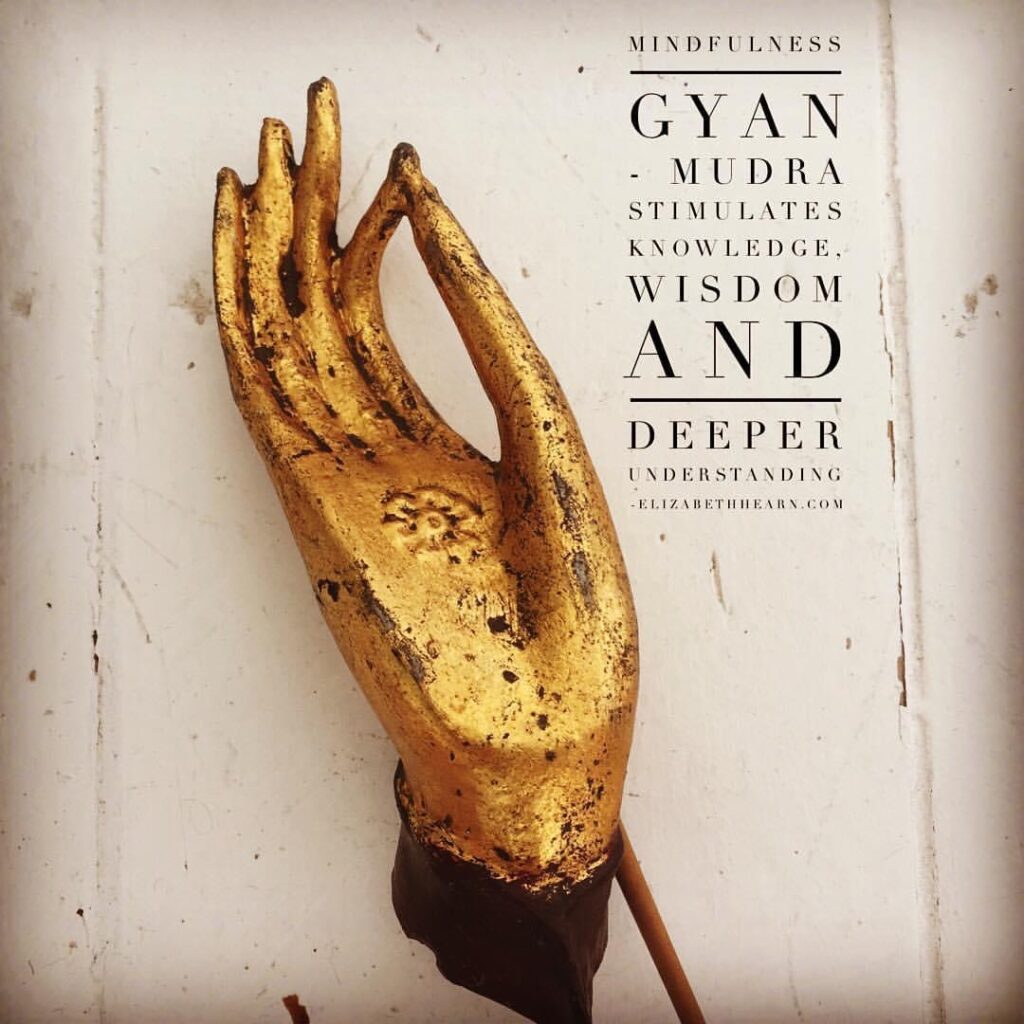
HP/NCH. Fellow ACCPH,
Mental Health, Trauma & Addictions Therapist
Founder Addiction Awareness
Harley Street Hypnotherapy
Author
Broadcaster
SELF MASTERY We are extraordinary beings. The key to discovering the full scope of our authentic selves lies in understanding our mind and attaining mastery over it. The mind is the greatest of all mysteries.
Intertwining principles of Transcendental Meditation:Focused Attention. Open Monitoring. Automatic Self-Transcending practiced with Breath-work/pranayama personifies self meditative mastery.
STRENGTH IN STILLNESS is for me, practising TM. I am privileged to be part of the universal twice daily TM practice led by existentially elegant, TM teacher /trainer Bob Roth, who created the opportunity for twice daily TM zoom sessions at the beginning of March, 2020.
TM with Bob continues today, accompanied with a few words to begin with a readings from sourced philosophy, mythology or contemporary psychology to finish the session with resonant, deepening spirituality.

BREATHE (REPEAT) TM (REPEAT) BREATHE (REPEAT) the breath, on a cellular level, is the energy force throughout the body, a self regulating continuum for our immune system, maintaining physical and psychological homeostasis. A distinctive attribute is in our ability to know our own essence—our own intrinsic divinity.
Deep breathing exercises improve heart rate variability. Strengthen the parasympathetic nervous system (your “rest and digest” network), resulting in reduced stress and optimised vagal tone.

HABITUATED Hypnotherapy and Transcendental Meditation: Transcendental meditation is a silent, mantra repetition 30 minute process. In the Summer of 1973, for my 20th Birthday present, a close wise friend gifted me the invitation to a TM training retreat.
TRANSCENDENCE didn’t naturally occur in my early practice of TM meditation. When it did I immediately knew I was accessing the unbounded stillness that lies deep within. And when you experience that pure stillness within, yourself, at the source of thought, even for a moment. I remembered that moment for a lifetime.
MEDITATION has many purposes: reduce stress, clear the mind, raise performance. But foremost among them is to experience transcendence. And not on rare, once-or-twice-in-a-lifetime occasions but whenever you want, to one degree or another, every day.

BREATH-WORK In “The Yoga Sūtra” Patañjali recommends the breath as a means for overcoming mental distractions that prevent us from understanding our Essential Nature.
He understood that as breath slows and grows calm, so follows the thinking mind. This allows a doorway for meditation to open whereupon we have the ability to glimpse what lies beyond the dividing mind: our underlying essential nature of unbreakable peace and wellbeing.
Patanjali describes the dynamics and power of the mind by selecting a precise term, chitta. Chitta is derived from the verb root chiti, “to comprehend, understand, realize, or experience completely (chiti kiti sanjnane).” The fact that the word for mind—chitta—is derived from chiti tells us the mind is both the means of, and the conduit for, understanding truth in its fullness. Through the mind we become aware of reality within and without.
The mind is the repository of all our thoughts, feelings, and memories. It is a storehouse of our likes and dislikes. We see the world—and ourselves—through the eye of our mind. When the mind is clear and peaceful, we see the world as bright and peaceful.
When the mind is convoluted, our understand- ing of the world and our relationship with it becomes equally convoluted. Our concepts of good and bad, right and wrong, depend on the quality of our mind, as do our likes and dislikes. The quality of our mind, in turn, shapes our thoughts, speech, and actions.

MANTRA: Chanting Om Tat Sat is believed to awaken and cultivate higher consciousness as a means of connecting with the true self. It is one of the most common mantras, often recited during Hindu religious practices, the study of the Vedas and at the end of the yajnas (sacrifices).
This mantra is also used by some yogis in India as a greeting, with Hari as a prefix. The greeting Hari Om Tat Sat is a reminder that individuals are more than the body and earthly, material life.
According to the Bhagavad Gita, all religious work or sacrifice should begin with the sound of Om. The sound of Tat reminds devotees to renounce any reward for the work or sacrifice they engage in. The sound of Sat serves as a reminder of what is good and true.
In particular, the Bhagavad Gita highlights the importance of Om Tat Sat in chapter 17 from verse 23 to 28. In this section, Lord Krishna declares that the mantra represents a threefold name for the Supreme soul, from which Brahman, the Vedas and yajnas originated
The repetitive chanting of this mantra encourages the mind to enter into a meditative state so that the practitioner may begin to connect with the higher Self or the Divine within.
Chanting may be practiced in any stable seated posture in which the spine can remain upright, such as sukhasana (easy pose) or padmasana (lotus pose). It is important to focus on the powerful inner vibration of this mantra whilst chanting, in order to connect with the divine truth within.
TRANSCENDENTAL MEDITATION ‘How we get there’ has been the domain of meditation since times immemorial. Meditation has long been associated with ideas of inner equanimity, clarity, focus, creativity, strength.
But, again, there are so many different types of meditation. Are they all the same? Do they all work? I have been practising and teaching meditation for a very long time. In the early days of my practice, the words ‘I meditate’ – if they were taken seriously – would often be translated to mean ‘I jog,’ ‘I listen to soothing music,’ ‘I follow my thoughts as they come and go,’ ‘I breathe deeply,’ or ‘I repeat a sound in my head.’
Everything was grouped under the big-top tent of ‘meditating.’ But now that assumption no longer holds up. From brain science we know that there are basically three different approaches to meditation.
This is because every discrete experience changes the brain in a discrete way: your brain responds differently if you listen to classical music or electronic music, if you watch a romantic comedy or a horrormovie. In the same way, scientists have found marked, and important, differences in the way the brain functions during these different practices.
Likewise, the cardiovascular, respiratory and nervous systems each respond differently to each meditation technique. Understanding the three approaches is important because each requires different degrees of effort and difficulty to practise; each impacts the brain differently; and each produces different outcomes for the health of mind and body. These three techniques are Focused Attention, Open Monitoring, and Automatic Self-Transcending.4 Focused Attention includes the classic depiction of meditation in popular culture: someone sitting upright, cross-legged on a floor or pillow, eyes closed and absorbed in a state of unwavering, deep inner peace. If you’ve ever gone to a yoga class, you’ve likely encountered this approach.
Thoughts are seen as the disrupter of mental calm, so you are asked to minimize – or better yet, stop – your wandering ‘monkey’ mind, to clear your mind of thoughts. To return to the ocean analogy, trying to clear your mind of thoughts is like trying to stop every wave on the surface of the ocean. It takes moment-to-moment hypervigilance, and for many people, it is a lot of work. Some even give up, insisting, ‘I can’t do it. Meditation isn’t for me.’
How do Focused Attention techniques impact the brain? One way to tell is through electroencephalography (EEG), which measures the electrical activity of the brain. EEG readouts measured while test subjects practise Focused Attention show that these techniques enliven gamma brain waves in the left prefrontal cortex, the brain’s decision maker.
This means that the electrical activity in the brain reaches a frequency per second of about 20 to 50 hertz (Hz), or cycles per second. You see a similar result when a student concentrates on a mathematical problem – which makes sense, because gamma waves are found when one is engaged in a challenging task.
In contrast to attempting to clear the mind of thoughts, the second category of meditation: Open Monitoring, also known as mindfulness, is about learning to observe thoughts dispassionately, without judgement, as they come and go. This is because thoughts themselves are not seen as the potential disrupter of calm, but rather it is the content or meaning of thoughts that can disrupt. So you learn to remain calm, unaffected and present evenwhen your mind is percolating with thoughts about annoyances at work or a longstanding argument with your partner. Back to the ocean analogy.
Now you’re in that little boat, and instead of trying to stop the waves, you are observing them rise and fall without emotion. In the process, you’re generating theta brain waves, with the electrical patterns slowing to about 6 to 8 Hz, close to the onset of dreams. Theta waves are associated with creativity, daydreaming and memory tasks. Several studies on mindfulness practices, many of which are included in the Opening Monitoring classification, also show alpha-2 brain waves (10 to 12 Hz) in the back of the brain.
These waves are associated with turning off brain areas – in this case, the visual system – and beta waves (16 to 20 Hz), which means that you are actively engaged in directing your attention. In addition, neural imaging shows that such mindfulness practices activate the anterior cingulate cortices, which are involved in emotions, learning and memory..
Open Monitoring can help you become more present and centered during stressful experiences. It can help calm your amygdala – the area of the brain that governs emotions and emotional behaviour – so that you don’t overreact to a situation. You can take a few minutes, breathe deeply, conduct a scan of how you are reacting, calm yourself, and reenter the fray. For many, it is a useful and practical coping tool.
Open Monitoring is a cognitive process like Focused Attention. By definition, it keeps your attention in the present moment – on the level of attending to the surface thinking level of the mind. I have been fortunate to learn Focused Attention and Open Monitoring from some of the best instructors, so I know firsthand that there is value to both practices.
But the one that I have practised regularly for nearly fifty years – the one that I find the easiest to do and that delivers the most immediate and long-term benefits to mind and body – is the third type: Automatic Self-Transcending.
Transcendental Meditation is in this category. Let’s return to the ocean analogy yet again: there are active, often turbulent waves on the surface, but there is calm at its depth. In the same way, we hypothesize that while the mind is active on the surface, deep within is a level that is calm yet alert; silent yet wide awake. The ancient meditation texts refer to it as the ‘source of thought’ or ‘pure consciousness’ – a field of limitless creativity, intelligence and energy within. Scientists give it a more clinical description: a state of ‘restful alertness.’
It is there. Deep within. Right now and at all times. Believe it or not. The problem is, we have lost access to it. The purpose of TM is to open the door to this unbounded field. There is no concentration or control of the mind; nothing guided; no suggestion or passive observation. Instead, TM simply allows the active-thinking mind to settle down to its own state of inner stillness at the deepest level of awareness, one that actually transcends, or goes beyond, all thoughts and feelings. It is your own quiet inner self, before you start thinking and creating and planning and making lists and deciding and worrying and celebrating.
It’s always been there, within you. It just gets lost or overshadowed easily by the constant noise and distractions of the day. In the context of the ocean analogy, we don’t try to control those turbulent waves on the surface, and we don’t watch them dispassionately, either. We simply access the calm at the ocean’s depth. It’s like a sprinter who decelerates from a fast run, to a slow jog, to a leisurely walk, to standing still, to sitting down. Same guy, just different degrees of activity. Easy. EEG readouts and brain imaging reveal that Transcendental Meditation strengthens the neural connections between the different areas of the brain, including within the prefrontal cortex, to promote better learning and decision making.5 It calms the amygdala, the sensitive stress alarm centre in your brain, which is important because a hyperaroused amygdala makes you overreact to both small glitches and big challenges in your day. Or it can immobilize you, making you shy away from new but doable challenges.
Roth, Bob. Strength in Stillness . Simon & Schuster UK. Kindle Edition.
The Value of Chanting the Gayatri
Chanting the Gayatri Mantra develops nada, a regular vibration in the channels of the subtle body, opening the various spiritual centers of your body. As a result, energy is awakened in the subtle body. Chanting the 24 seed syllables in the Gayatri Mantra generates a wondrous jhankar, a pulsating ringing so that a powerful energy flows from the chakras of the subtle body. This endows you with Yoga Shakti, the energy of union with the divine.
The Gayatri is best chanted silently or in a soft, sweet voice with a tranquil mind. As a result, your wishes, including those that have not been expressed yet, will all be fulfilled. Astrologically, the Gayatri protects her children from the negative influences of the rays of the nine planets, removing fear and helping you to successfully complete any task. She also maintains balance between air, fire, and earth, the three qualities or doshas in the body, ensuring good health. There is nothing more purifying than the Gayatri mantra. By meditating on the Gayatri Mantra, you will gradually realize that the whole universe is the radiance of mother divine, witnessed as the embodiment of your own soul. When you ascend to such an elevated state, you will never fall again. You will always be drenched in an ocean of divine bliss. This alone is the fulfillment of spirituality, which you can attain effortlessly by meditating on the Gayatri Mantra. This is why Gayatri is hailed as the mother of all mothers.
Learn the Gayatri Mantra
The following is the standard version of the Gayatri Mantra, which is the one most commonly used, along with a phonetic pronunciation. There are many commercial recordings available to help you learn it, as well as my recording in the chants section of my website www.rogergabriel.com.
| Om | |
| Bhur Bhuvah Suvaha | Bhoor Bhoo-va Su-va-ha |
| Tat Savitur Varenyam | Tat Sa-vee-toor Var-ayn-yam |
| Bargo Devasya Dhimahi | Bar-go Day-vas-ya Dhee-ma-hee |
| Dhiyo Yo Nah Prachodayat | Dhee-yo Yo Nah Pra-cho-da-yaat |
Rather than give a direct translation of the Gayatri Mantra, which is often confusing to try to understand, here are several different meanings attributed to it. Some favor it as the origins of the universe, others as an aspect of the sun. You can choose whichever one you resonate with best.
- I meditate upon the Supreme Energy, Gayatri Devi, who has the supreme quality of playing in the creation of all the worlds, and who induces noble thoughts in the hearts of everyone.
- Oh, creator of the universe. We meditate upon thy supreme splendor. May thy radiant power illuminate our intellects, destroy our ignorance and guide us in the direction of enlightenment by purifying our inner hearts.
- You who are the source of all power, whose rays illuminate the world, illuminate my heart so that it too can do your work.
- Let us commune with the luminous light of consciousness that sustains all the worlds, that it may inspire our liberation.
- We meditate on that light of the luminous God Savitur, who is the inspirer of all beings, their inner self, and is the creator of the universe. We mediate on that adorable light which is the self of the supreme Lord of the universe. It is the giver of knowledge and destroyer of ignorance. It is the light of the Supreme Brahman itself. May that light enlighten us.
The Gayatri Mantra with Kriyas (Actions)
The following is a longer version of the Gayatri, which activates all seven Lokhas or planes of existence and specifically asks for the blessing of enlightenment. It may be practiced with or without the Kriyas (hand movements). Kriyas are said to connect you with your Atman (soul). The Kriyas should be practiced with the right hand only. Open your hand with the palm facing upward.
| OM BHUH | Touch the thumb to the base of the ring finger |
| OM BHUVAH | Touch the thumb to the base of the little finger |
| OM SVAHA | Touch the thumb to the middle of the little finger |
| OM MAHAH | Touch the thumb to the tip of the little finger |
| OM JANAH | Touch the thumb to the tip of the ring finger |
| OM TAPAH | Touch the thumb to the tip of the middle finger |
| OM SATYAM | Touch the thumb to the tip of the index finger |
| OM TATSAVITUR VARENYAM | Touch the thumb to the middle of the index finger |
| BHARGO DEVASYA DHIMAHI | Touch the thumb to the base of the index finger |
| DHIYO YO NAH PRACODAYAT | Touch the thumb to the base of the middle finger |
| OM APO JYOTIR | Touch the first three fingers to the right eye |
| RASO’MRTAM | Touch the first three fingers to the left eye |
| BRAHMA BHUR BHUVAH SVAR OM | Touch the first three fingers to the third eye |
Repeating the Gayatri Mantra
If you can comfortably wake up and meditate during brahma muhurta, between 3:30-4:30 a.m., this is the best time for practicing the Gayatri Mantra. If this isn’t possible for you, sunrise, noon, and sunset are also auspicious times. However, the Gayatri may be practiced at any time of the day. If you can only practice it one day each week, Friday is the most auspicious.
It is best to perform a simple pranayama, the expansion of vital breath, such as alternative nostril breathing, five times before beginning the repetition of the Gayatri Mantra. If possible, face east toward the rising sun in the morning and west toward the setting sun in the evening.
While chanting the Gayatri Mantra, try to pause slightly at the end of each line and at the end of each repetition, rather than rushing through it. When practicing the Gayatri Mantra, it is recommended to always repeat it at least three times, although you can repeat the Mantra as many times as is comfortable. I like to repeat the Gayatri Mantra every morning before my silent practice of Primordial Sound Meditation. I do three of the longer version with the Kriyas and then 27 (a quarter mala) of the shorter version, without Kriyas.
In general, when using the Kriyas, it is recommended to repeat the mantra three times using the Kriyas and then continue repeating either the long or short version of the Gayatri at least 10 more times without Kriyas.
Traditionally, the mantra is repeated silently. However, if you prefer, it may be chanted softly aloud. If it’s comfortable, when reciting the Gayatri, effortlessly visualize the sun’s rays streaming forth into the world, entering your heart, then streaming out from your heart’s center, sending blessings to the world.
The Gayatri is a life-enhancing prayer. The ancient texts say that repeating the mantra 10 times daily removes the sins of this life, 100 times daily removes the sins of your previous life, and 1000 times daily removes the sins of three yugas (innumerable lives).
By meditating with the Gayatri Mantra, you will tap into the divine state of pure consciousness and enlightenment.
Embark on the path to self-mastery with Deepak Chopra and Roger Gabriel Primordial Sound Meditation Online Course. Learn More.